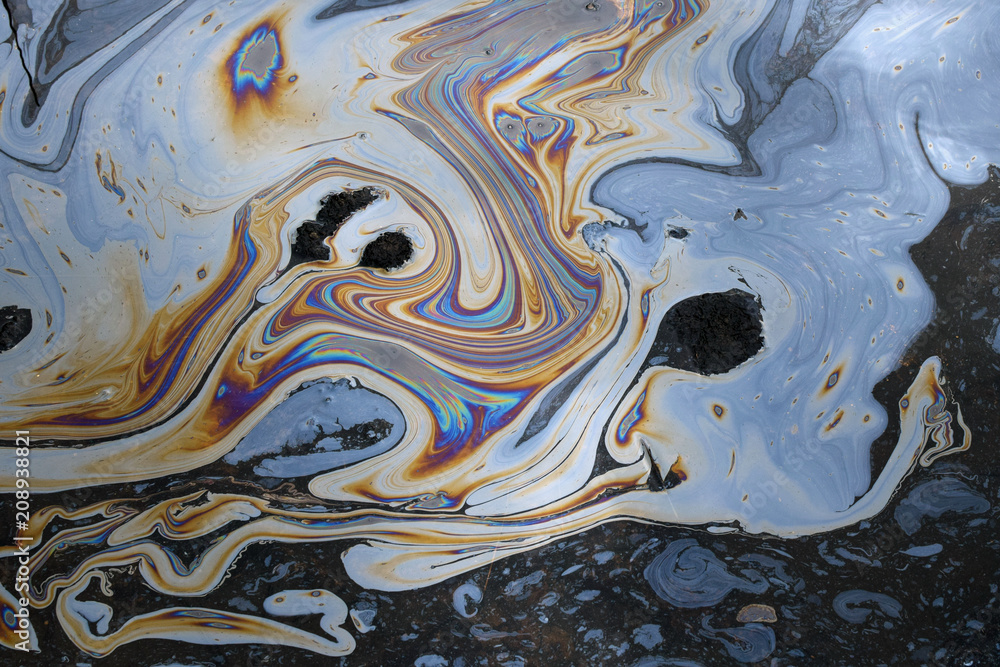
by Dana Stephens | May 12, 2025
Spring is a time of change. Spring brings changes in our waters as well. Some of these changes are visible on top of the water and cause concern among water users and viewers. Let’s dispel some of these concerns associated with the spring season.
Sometimes, water users and viewers notice what appears to be oil floating on top of the water. Could this be oil? Potentially. Could this not be oil? Most likely. Plants perish, and decomposition occurs, typically during the spring and fall seasons of the year. Much of the decomposition that happens in spring is associated with the initial growth and development of plants. Bacteria living in the soils within and around the water break down the perished plants. These bacteria are decomposing the old plant material. The waste product produced from the bacteria’s decomposition of the old plant material is an oily substance. The oily sheen on the water is a waste product of bacteria. Frequently, the oil accumulates in portions of water where there is little to no water movement. As the decomposition process completes, the oily sheen should lessen over the next few days to weeks. This bacteria-produced oil from decomposition is a natural process.
Petroleum-based oil seen on water is not a natural process. Petroleum-based oil could enter water from various sources, such as but not limited to transportation spills, stormwater runoff, and improper disposal of products containing oil. Like the oily substances produced by bacteria during decomposition, petroleum-based oils will float on top of the water and accumulate where there is little to no water movement.
Here are some tips to identify the difference between oils in water:
|
Bacteria-produced Oil |
Petroleum-based Oil |
| Appearance |
Oily sheen on top of water with little to no difference in color throughout |
Oily sheen on top of water with differences in color throughout (may even appear like a rainbow) |
| Touch
(use a stick) |
When disturbed, the sheen breaks away easily with irregular patterns and does not reform. The oil will not adhere to the stick. |
When disturbed, the sheen swirls, elongates, and does reform. The oil may adhere to the stick. |
| Odor
(not always present) |
Strong organic, musty, or earthy smell. |
Volatile organic compounds (VOCs) smelling like gasoline or diesel fuel. |
Another sheen on our waters that is frequent during Florida’s springtime is pollen. Pine, tree, and weed pollen accumulate on top of water, especially in areas with little or no water movement. If the sheen on the water is yellow, orange, or sometimes white, this is most likely due to pollen. Think about how pollen shows on a car in Florida during spring…our waters can show the same to some extent.
Let’s give it a try! See if you can identify the sheens in water in each photo—answers at the bottom of the page.
Photo 1

Photo 2

Photo 3

Photo 4
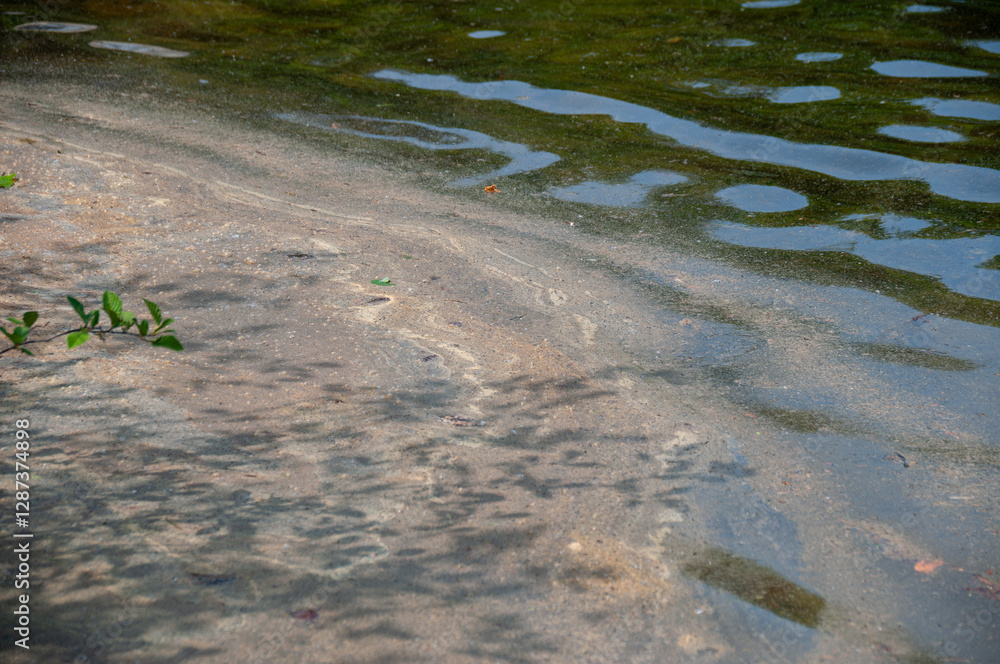
Photo 5

Photo 6
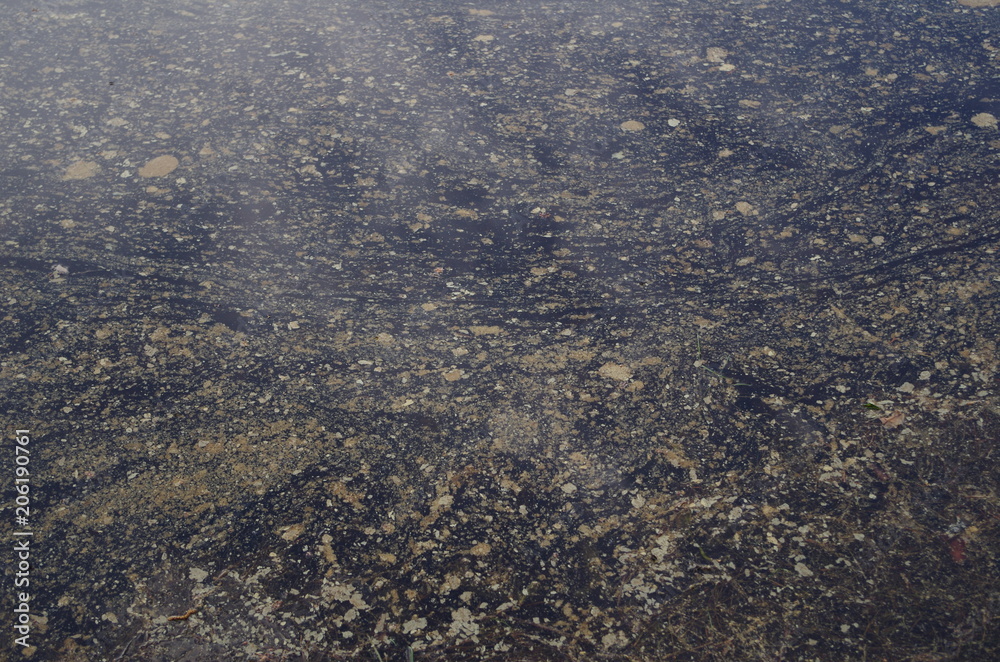
Keep Scrolling For Answers!
.
.
.
.
.
.
PHOTO ANSWERS: Photo 1: Bacteria-produced oil sheen. Photo 2: Pollen sheen. Photo 3: Petroleum-based oil sheen. Photo 4: Pollen sheen. Photo 5: Petroleum-based oil sheen. Photo 6: Mixture of bacteria-produced oil and pollen sheen. Note all photos were obtained from Adobe Stock Photos.
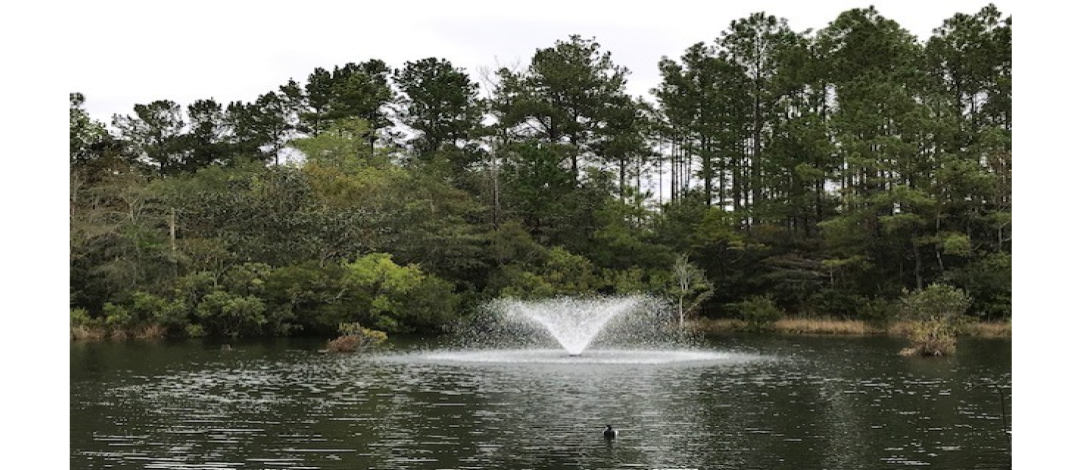
by Laura Tiu | Mar 7, 2025
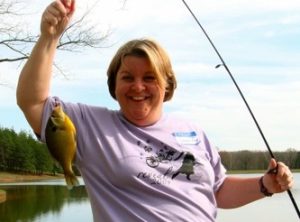 As spring approaches, I’ve been receiving more calls from local pond owners looking for advice on preparing their farm ponds for the season. Managing a pond in the Florida Panhandle can be tricky—especially when dealing with spring-fed ponds. While these ponds are often beautifully clear, their constant water turnover makes management a challenge.
As spring approaches, I’ve been receiving more calls from local pond owners looking for advice on preparing their farm ponds for the season. Managing a pond in the Florida Panhandle can be tricky—especially when dealing with spring-fed ponds. While these ponds are often beautifully clear, their constant water turnover makes management a challenge.
If you’re wondering how to get your pond ready for spring, here are some key considerations and resources to help guide you.
Start with a Water Quality Test
The first step in assessing your pond’s health is testing the water. I always recommend that pond owners bring a pint-sized water sample in a clean jar to their local Extension Office for analysis. Keep in mind that not all offices offer this service, and public testing options are limited. However, private labs and DIY testing kits are available—though they can be costly.
The most important parameters to check are pH, alkalinity, and hardness: pH should ideally range between 6 and 9 for a healthy fish population. Local ponds often hover around 6.5, making them slightly acidic.
Alkalinity and hardness measure the water’s ability to neutralize acids and buffer against sudden pH changes. For optimal pond health, alkalinity should be at least 20 mg/L, but many local ponds fall below this level.
Improving Pond Water Quality
If your pond’s water quality is less than ideal, there are two common ways to improve it: liming and fertilization.
Applying Agricultural Lime: Properly adding agricultural lime can raise alkalinity and stabilize pH levels. However, in high-flow ponds, lime tends to wash away quickly, making this method ineffective for ponds with constant discharge.
Fertilizing to Boost Productivity: Fertilization increases phytoplankton growth, which supports the pond’s entire food web, benefiting juvenile fish and invertebrates. Unfortunately, like lime, fertilizer is quickly washed out of high-flow ponds, making it ineffective in these cases.
Making the Best of Your Pond
If your pond has a continuous discharge due to spring flow, the best approach may be to embrace its natural clarity, even if it doesn’t support a thriving fish population. However, if your pond retains water without frequent outflow, you may be able to enhance its productivity with the right amendments.
For personalized guidance, contact your local UF/IFAS Extension Office. You can also start by reviewing this helpful fact sheet: Managing Florida Ponds for Fishing. By understanding your pond’s unique characteristics, you can make informed decisions to keep it healthy and enjoyable throughout the season.
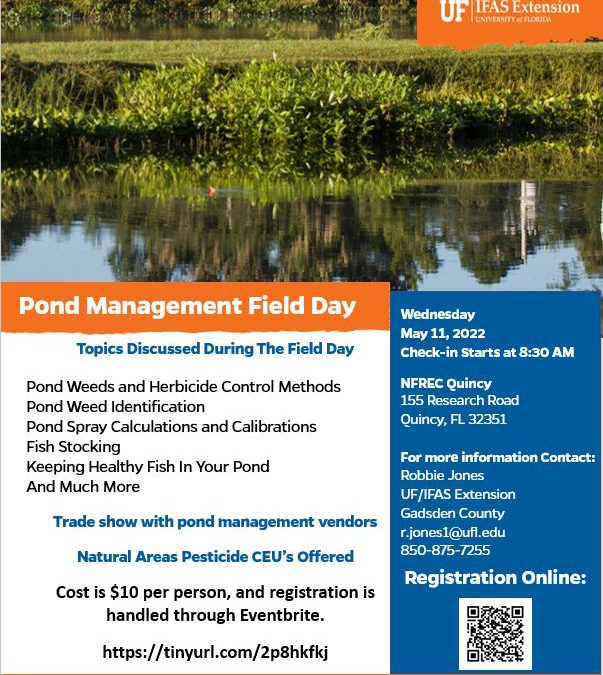
by Ray Bodrey | Apr 25, 2022
A Pond Management Field Day will be held May 11, 2022, at the North Florida Research and Education Center, in Quincy, Florida. The field day will include pond demonstrations and classroom workshops on weed prevention, sprayer calibrations, and fish stocking and management. There will also be a trade show with vendors as well as pond water testing and weed identification. The field day will also provide Pesticide CEU’s for natural areas. Registration for the Field Day is through Eventbrite and the cost for the day is $10, which includes lunch. For questions or more information, contact Robbie Jones at the UF/FAS Extension- Gadsden County Office – 850-875-7255.
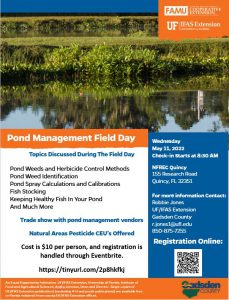

by Kalyn Waters | Dec 17, 2021

A family tradition of cutting a fresh tree is something Americans have done for generations.
There is something special about the traditions of a live Christmas tree. For many families the tradition of cutting and decorating the tree is the prefect start to the holidays. But after you are done decking the halls and hanging the tinsel most of the 13 million Americans who have a live Christmas tree all find themselves asking the questions of “what to do with it?”. There is the ever-popular bonfire, while exciting, it burns in seconds and the excitement is over, so why not allow your Christmas tree to continue to give back all year round?
Did you know that Christmas trees make great habitat for fishponds? By sinking the tree into the depths of your fishpond you can increase the complexity of the aquatic habitat. The woody debris provides a place for aquatic macroinvertebrates to live. In addition, increasing and improving the habitat availability of your fishpond will increase the health and diversity of it. Over time your tree will begin to host new vegetation which will attract small insects, snails, and crawfish. This is a buffet for bait fish and in turn will also attract larger predator species for you to catch. While the needles of the tree will likely be gone in about three months, some trees have been found up to ten years later.
Here are the steps for recycling your tree:
- Remove all ornaments, tinsel, and other manmade products from the tree (do not use artificial trees).
- Place a weight of some type of the trunk of the tree. This can be done by adding cement in a 5-gallon bucket or with other weighted items such as a cinder block. This should be attached with wire, as most ropes will deteriorate over time.
- Ideally the tree is placed upright in an area of the pond that is deep enough to cover the entire tree, when upright. Keep in mind that water levels will change of the year, and you want to place the tree somewhere it will be submerged all year.
- When picking your location remember that placing the tree in areas of the pond with limited bottom habitat will increase its effectiveness. If you have a fish finder, use it to determine the areas of your pond that are lacking bottom cover.
- Ideally, over the years you will place trees in a clustered area. This tends to be more effective at attracting fish than a single tree.
For every avid fisherman, recycling your Christmas tree is truly a gift that will keep on giving. While the holidays seem to fly by, your sunken tree will continue to provide an improved habitat for the fish and in a short time will become a support structure for your aquatic food chain, and that’s something even ole’ Saint Nick would be excited about!
*IMPORTANT INFORMATION: this should only be done in privately owned ponds. Before adding anything to public waters you should contact your local Florida Fish and Wildlife Conservation Commission officer. For more information on fish attractants visit FWC website at: FWC Fish Attractors

by Kalyn Waters | Jun 3, 2021
 There are few things better than fishing, especially when you are catching fish! Taking time to manage your fish pond can make a tremendous difference in the quality of fishing you will have. In this session of Fish Camp we are joined by Dr. Chuck Cichra to learn about basic strategies to mange your pond for great fishing.
There are few things better than fishing, especially when you are catching fish! Taking time to manage your fish pond can make a tremendous difference in the quality of fishing you will have. In this session of Fish Camp we are joined by Dr. Chuck Cichra to learn about basic strategies to mange your pond for great fishing.
Dr. Cichra walks pond owners through pond development, management and stocking strategies that take your fishing from good to great. To view the webinar in full go to Managing For Great Fishing

by Kalyn Waters | Jun 3, 2021
 Weeds in our pond can be a real issue. However, much of the vegetation in our pond is beneficial to its overall health. In this edition of Fish Camp Dr. James Leary walks pond owners through the process of identifying problem plants and developing a management plan.
Weeds in our pond can be a real issue. However, much of the vegetation in our pond is beneficial to its overall health. In this edition of Fish Camp Dr. James Leary walks pond owners through the process of identifying problem plants and developing a management plan.
Once a plan is in place, pond owners should be able to manage the vegetative growth of their ponds to ensure that both native and stocked aquatic life have a healthy food source to thrive on, but also that your fishing experience is not hindered by aggravating weeds.
In this webinar you will learn:
- How to identify what plants are in your pond
- How to develop an action plan for your weed management
- How to manage dissolved oxygen to avoid a fish kill
- And more
Please use this link to view the webinar in full: Fish Camp: Aquatic Weed Management














